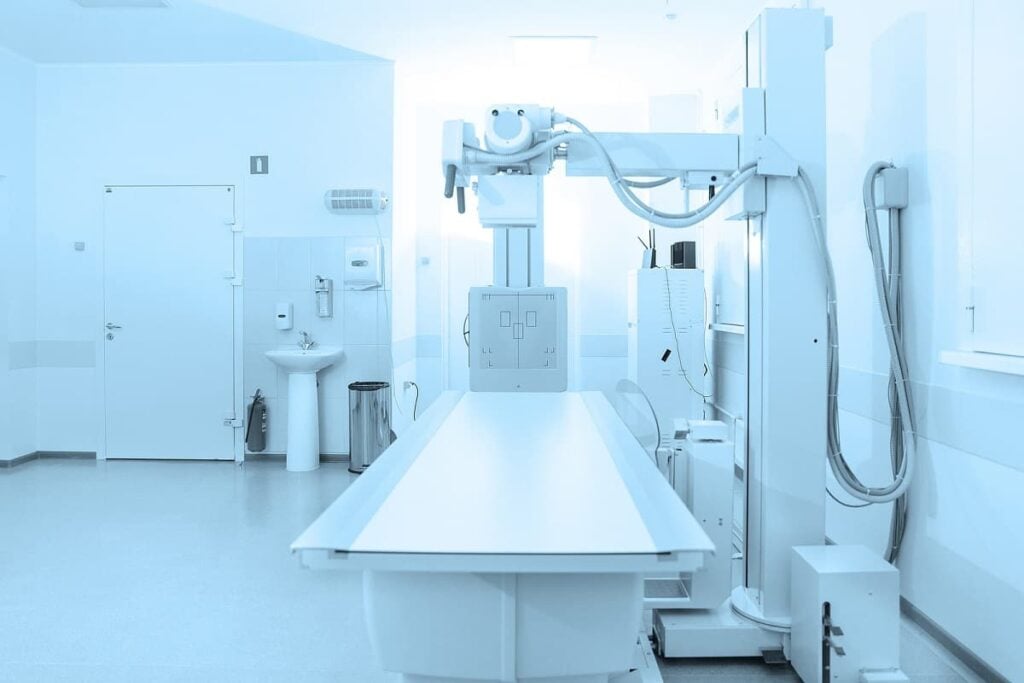Definitive Healthcare Stock: Commercial Intelligence SaaS
Table of contents

It’s easy to understand why the market assigns a premium to software-as-a–service (SaaS) business models. Typically, such companies have a broad customer base with no single customer accounting for more than a small fraction of revenues. They’re usually high-growth companies where the more customers brought on board, the higher the margins. And most importantly, they provide easy-to-follow metrics that anyone can understand – even an MBA.
Annual recurring revenues (ARR) better be growing steadily, gross retention rate ought to be in the high 90s, and net retention rate ought to be above 100%. Those three metrics alone can tell you a lot about a SaaS business’s health. We love SaaS business models so much we recently added a flag to our tech stock catalog which denotes whether a company is “pure SaaS,” “some SaaS,” or “no SaaS.” Today, we’re going to talk about a pure SaaS play called Definitive Healthcare (DH).
About Definitive Healthcare Stock
Founded in 2011, Bahstun’s own Definitive Healthcare is a $3.65 billion company that recently has an initial public offering (IPO) during which 15.6 million shares were sold at $27 a share. Today, those shares trade at around $41 a share representing a +52% premium. All that excitement is around “deep healthcare commercial intelligence” that DH provides to over 2,600 customers via SaaS subscriptions which make up 99% of the total revenue pie. (No single customer accounts for more than 2% of revenues.) The sort of commercial intelligence Definitive Healthcare sells within the healthcare and life sciences ecosystem falls into three categories:
- Third-Party Data: 17 billion claims covering over 250 million patients as of May 2021
- Manual Research: 650,000 research calls and 3.7 million e-mail outreaches per year.
- Automated Research: Over 20,000 government and regulatory sources, and over 250,000 websites, journals, publications, news articles, job postings
That last bullet point relates to DH’s use of artificial intelligence to extract information automatically from 270,000 different sources, something impossible to do manually. The company then applies data science to all that big data to produce further insights. Functions in the healthcare industry that are willing to pay for this intelligence include Sales, Marketing, Clinical Research & Product Development, Strategy, Talent Acquisition, and Physician Network Management.
To establish their market leadership position, DH made at least five acquisitions including the following:
- Monocl (Oct 2020) – a Swedish cloud-based platform with millions of expert profiles.
- HSE (Dec 2019) – a software analytics firm that helps clients find patient clusters who would most benefit from their products and services.
- HIMSS Analytics (Jan 2019) – a global healthcare advisor providing guidance and market intelligence solutions.
- HealthData (Jun 2016) – a provider of data and analytics on U.S. healthcare organizations.
- US Lifeline (Oct 2015) – a provider of real-world data and intelligence for the healthcare supply chain.
During the process of achieving commercial success, DH took on a decent chunk of debt – $457 million – a number that’s slowly increasing over time. If the company managed to become an undisputable industry leader, then maybe all that leverage was a smart move.
Market Leadership and TAM
With such an incredibly large dataset and at least five acquisitions, it’s easy to believe DH is not just a leading provider, they’re an undisputed leader in healthcare commercial intelligence. Indeed, DH describes the healthcare commercial intelligence market as weak and “highly fragmented,” stating “no competitor matches our breadth of data and intelligence solutions.” We’re then left wondering just how big the total addressable market (TAM) is for healthcare commercial intelligence.
DH describes their TAM as a $10 billion opportunity, and their math is unusual. They multiply the number of possible clients for each segment by an average ARR that varies as follows:
- Life Sciences – the average ARR of the top quartile
- HCIT and Healthcare Providers – the average ARR of the top half
- Other – the average ARR
What they’re implying is a very low penetration with existing clients. That’s where net dollar retention (NDR) becomes an important metric to watch. Is DH really squeezing more money out of existing clients to capture the large amount of TAM said to be stored up in existing customers? As with many SaaS firms, DH omits a critical metric – gross retention rate – which tells us what percentage of their clients are renewing.
Even if they’re being too optimistic and the TAM is only worth $5 billion, there’s still loads of upside to be had given DH’s current ARR which we estimate at $153.6 million (using annualized revenues because it’s not explicitly stated) – about 3% penetration for a $5 billion TAM or 1.5% for a $10 billion TAM.
Should You Buy Definitive Healthcare Stock?
Believe it or not, lots of people ask Google whether they should buy a stock. They’re better off flipping a coin. Always invest in a stock based on your own convictions, because if you buy what someone else tells you, they won’t be there to help you sell it. And selling a stock to capture alpha at the most appropriate time is exceptionally difficult.
That being said, we’re always happy to tell you what we’re planning to do, which is not to buy Definitive Healthcare Stock. For a stock to find a place in our own portfolio of ~33 tech stocks, it needs to pass a series of tests. DH ticks a lot of our boxes, we’re not loving the stock. It’s the same reason we didn’t love another SaaS stock with strong metrics – Procore. Both companies are not industry agnostic which means an industry-specific downturn could wreak havoc on them. Contrast this to other SaaS companies like DocuSign or Splunk that sell their solutions to every industry out there.
One opposing argument to make is that the healthcare industry is resilient to recessions because we’ll always have sick people. Fair enough, but healthcare executives behave like all other executives. If there’s an economic downturn, they look to cut costs. We don’t want to invest in any nice-to-have subscription offerings, we want solutions that are equally in demand during any economic climate – they either provide a critically important function (i.e. Databricks) or they save companies money (i.e. Health Catalyst). We don’t believe that commercial intelligence is a critically important enough offering to capture TAM – especially from existing customers – when purse strings tighten.
Conclusion
We added a note to our own investment methodology that highlights the importance of a SaaS business being industry agnostic. As risk-averse investors, we’re always looking for ways to reduce risk. You wouldn’t want your portfolio dedicated to one narrow industry niche and the same goes for stocks.
Definitive Healthcare is a nice healthcare SaaS pure play with healthy metrics and lots of potential growth ahead. We like the stock, but that’s as far as we’re willing to go. Definitive Healthcare – we really, really like you as a person, but it’s better we just remain friends.
Sign up to our newsletter to get more of our great research delivered straight to your inbox!
Nanalyze Weekly includes useful insights written by our team of underpaid MBAs, research on new disruptive technology stocks flying under the radar, and summaries of our recent research. Always 100% free.















